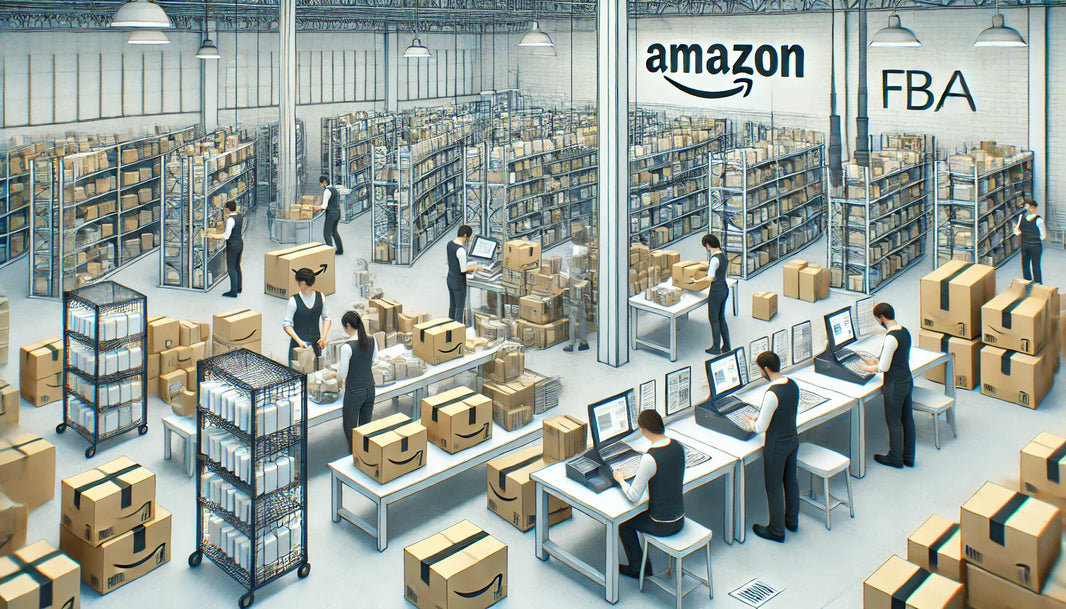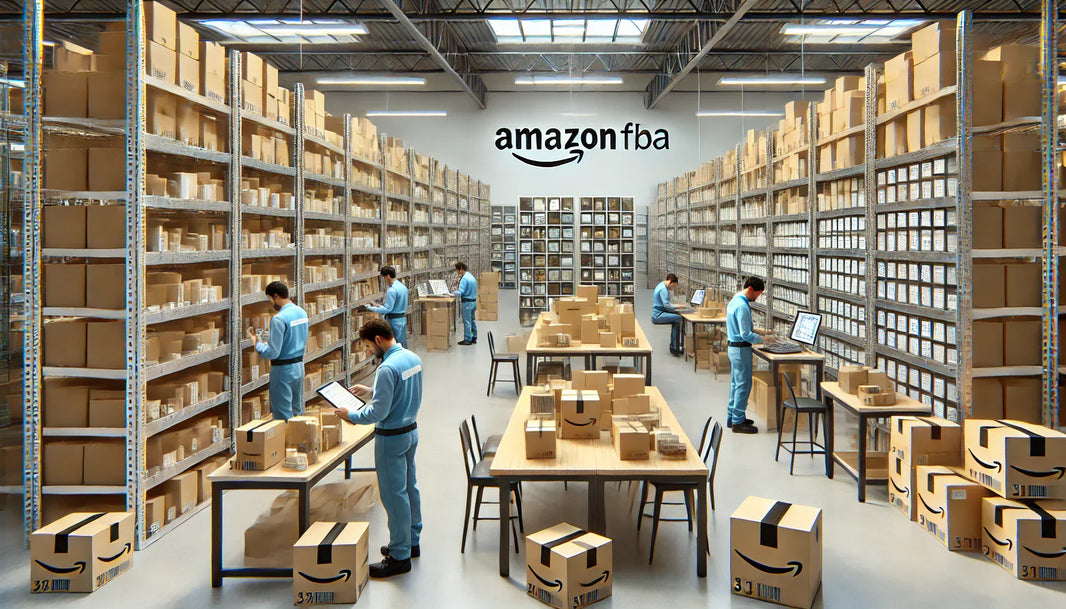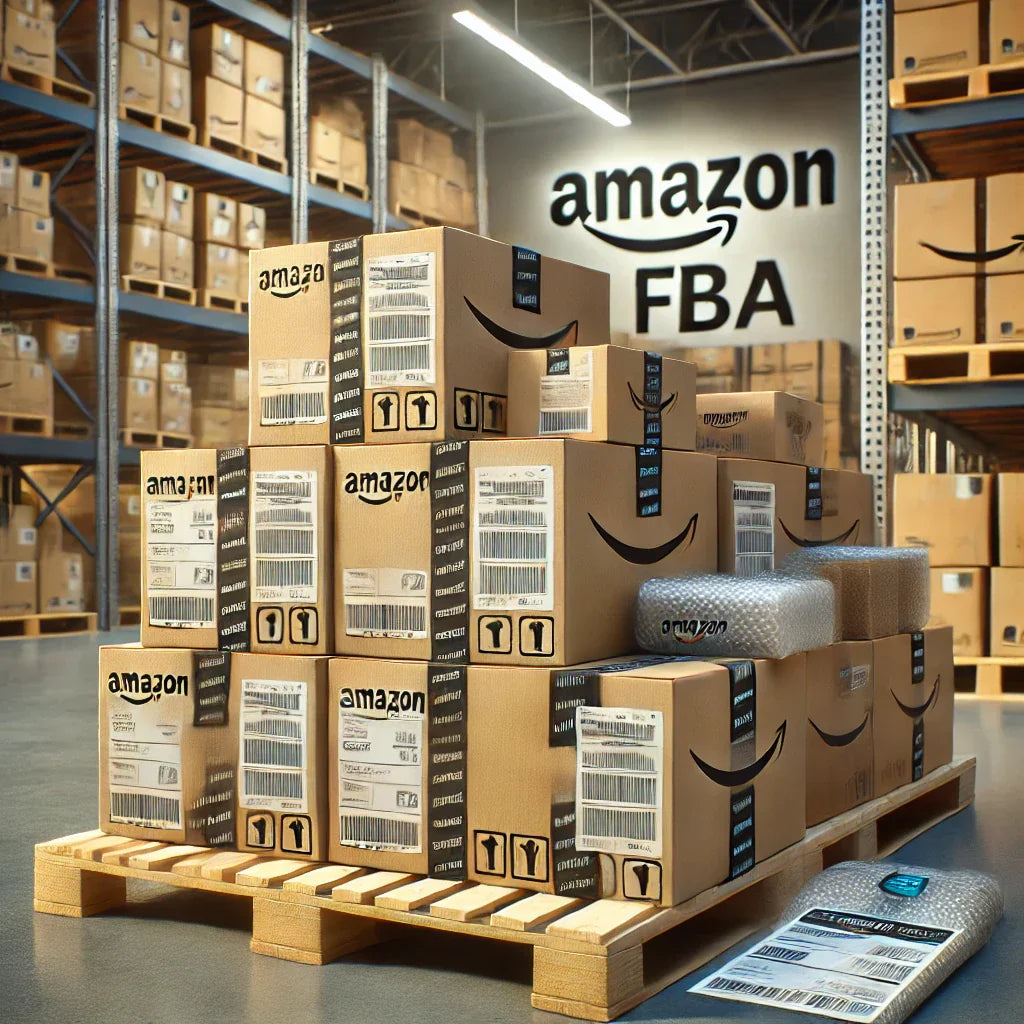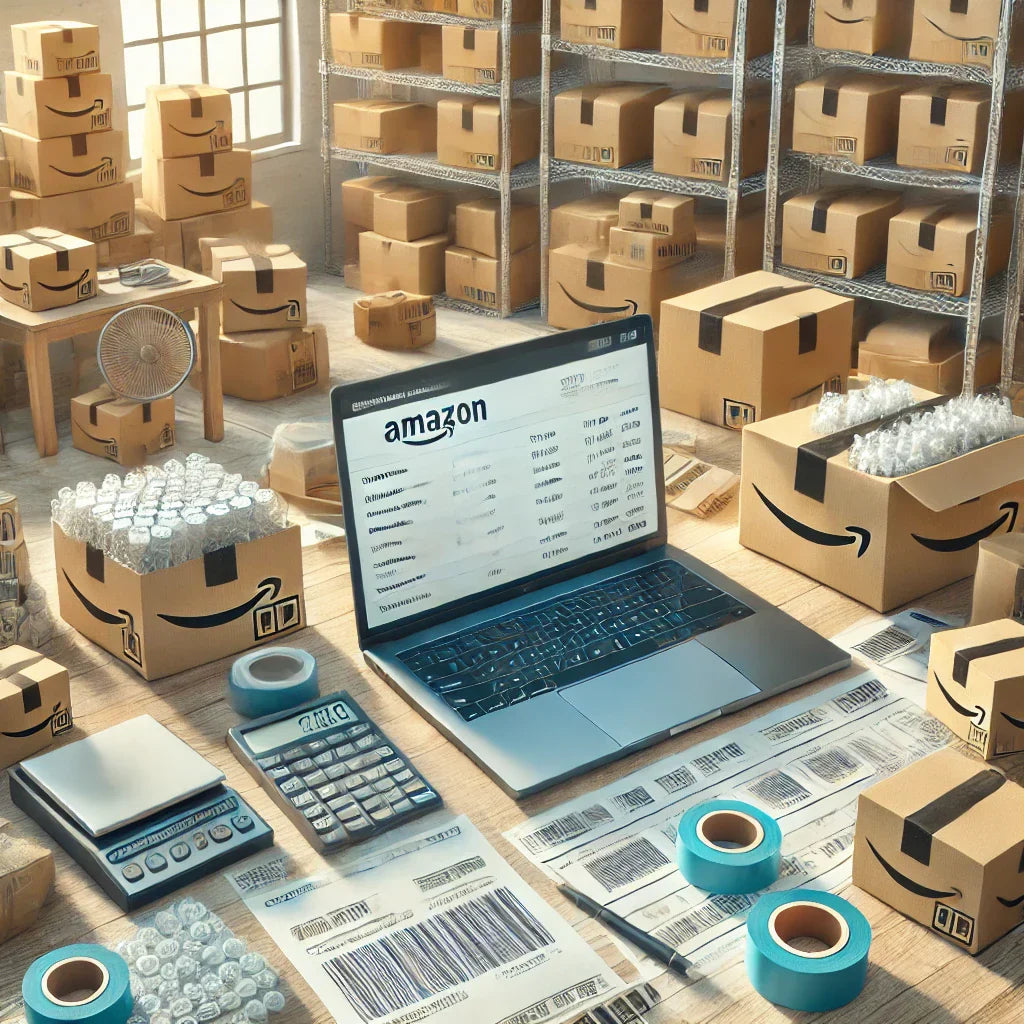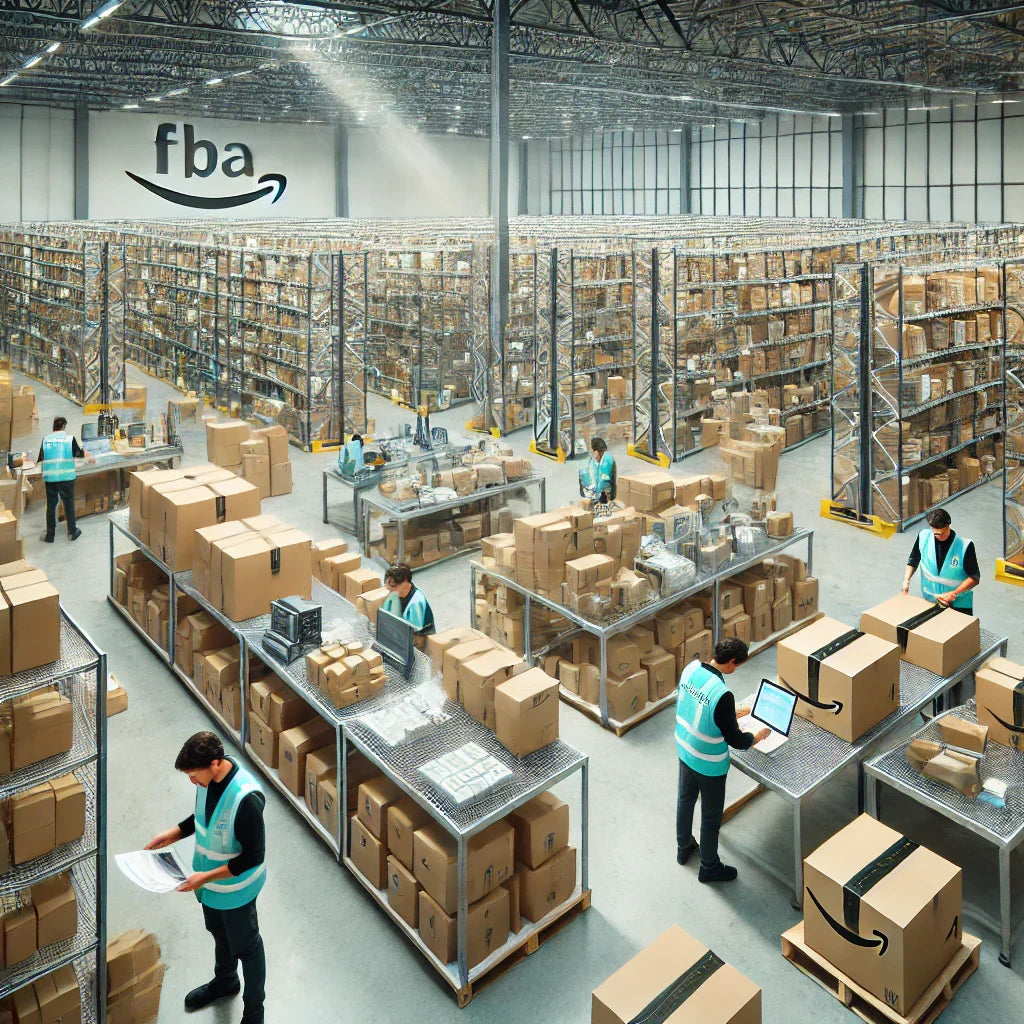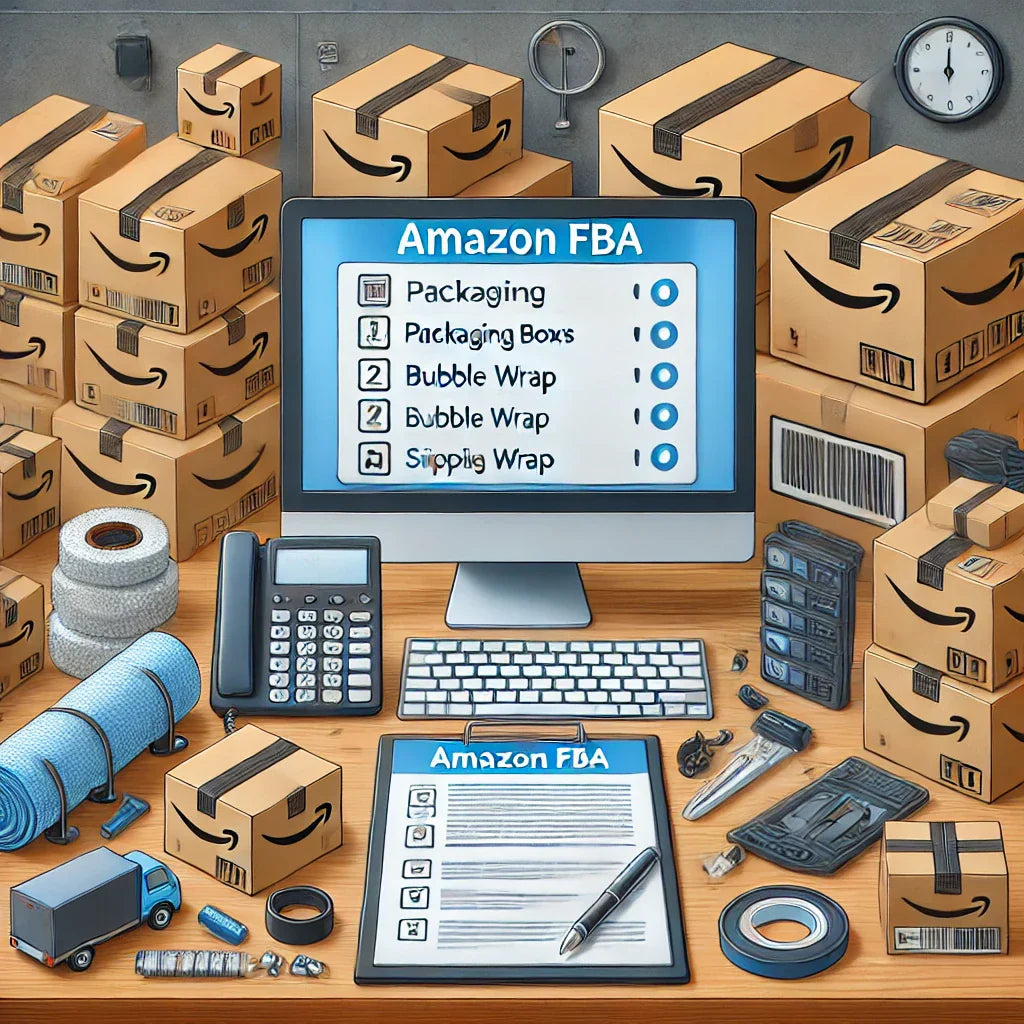In the ever-evolving world of global logistics, DHL stands as a pivotal leader, renowned for its extensive network of distribution centers strategically located worldwide. These centers play a crucial role in facilitating efficient supply chain management and supporting the seamless movement of goods across borders. Whether handling high-volume shipments or managing time-sensitive deliveries, DHL's infrastructure ensures reliability and scale unmatched in the industry. Understanding how these distribution hubs operate provides valuable insights into what makes global logistics efficient, agile, and indispensable for modern commerce.

The Importance of Distribution Centers in Modern Logistics
Distribution centers form the backbone of global supply chains. Unlike warehouses that solely store products, distribution centers are dynamic hubs that facilitate product processing, packaging, and shipping. DHL’s approach exemplifies the perfect blend of technology, expertise, and strategic placement to meet the needs of a globalized economy. This proactive approach to distribution has solidified DHL’s status as an industry titan, delivering unparalleled speed and reliability in its logistics services.
Key Functions of DHL Distribution Centers
DHL distribution centers are designed to streamline various logistics processes, enhancing the overall efficiency of the supply chain. Some of the critical functions of these centers include:
- Inventory Management: With advanced tracking systems, DHL maintains precise control over inventory levels, ensuring products are available when needed without overstocking or shortages.
- Order Fulfillment: High-speed sorting systems enable the rapid picking, packing, and dispatching of products, minimizing turnaround times.
- Cross-Docking: To reduce storage times, DHL centers often employ cross-docking, where products are unloaded from inbound trucks and loaded directly onto outbound vehicles with minimal handling.
- Customized Solutions: Many DHL distribution centers offer value-added services like product assembly, kitting, and quality control, tailored to the unique needs of different industries.
These functions position DHL as a trusted partner for businesses that require high efficiency and a global reach.
Technology Driving DHL’s Distribution Centers
One of the standout features of DHL’s distribution network is its integration of cutting-edge technology. Automation, robotics, and data analytics have revolutionized the logistics landscape, allowing for faster processing and better accuracy. Here are some of the technologies that play a significant role:
- Automated Guided Vehicles (AGVs): AGVs help transport goods within the distribution centers, reducing manual labor and increasing operational safety.
- Robotic Picking Systems: These systems can pick and pack items faster than human workers, ensuring high precision and reduced error rates.
- IoT and Real-Time Tracking: The use of sensors and connected devices allows for continuous monitoring of shipments, giving DHL and its clients full visibility of the logistics process.
- Data Analytics for Predictive Insights: By leveraging big data, DHL can anticipate demand spikes, optimize routes, and streamline operations to reduce costs and improve customer satisfaction.
The integration of these technologies not only enhances the speed and efficiency of operations but also aligns DHL with sustainability goals by optimizing resource use.
Strategic Placement of DHL Distribution Centers
The global presence of DHL is made possible by its meticulously planned distribution centers located near major transport hubs, such as ports, airports, and rail networks. This strategic placement allows DHL to minimize transit times and respond quickly to global logistics demands. For instance, centers near major international airports facilitate quicker air freight logistics, crucial for time-sensitive shipments.
Case Studies: Key DHL Distribution Hubs
To understand the impact of DHL distribution centers, it is helpful to explore some of their most notable facilities:
- Leipzig/Halle Hub: This hub is one of DHL’s largest and acts as a central gateway for European and international shipping. Its advanced logistics technology allows it to process thousands of shipments every hour, making it a cornerstone of DHL’s global operations.
- Hong Kong Global Distribution Center: Serving as a critical link between Asia and the rest of the world, this center ensures swift transit for high-volume shipments, leveraging advanced cargo-handling systems.
- Cincinnati/Northern Kentucky (CVG) Superhub: A vital asset for DHL’s operations in the Americas, this hub processes millions of packages annually and is equipped with state-of-the-art automated sorting systems.
These hubs showcase DHL’s commitment to maintaining a global logistics network capable of meeting diverse client needs efficiently.
Sustainability Initiatives in DHL’s Logistics Network
DHL has made significant strides in integrating sustainability into its logistics practices, ensuring its distribution centers are not just effective but also environmentally responsible. Some key initiatives include:
- Green Warehousing: Utilizing renewable energy sources like solar panels and optimizing building designs to minimize energy consumption.
- Eco-Friendly Vehicles: Incorporating electric and low-emission vehicles for last-mile deliveries to reduce carbon emissions.
- Waste Reduction Programs: Implementing recycling and waste management strategies within distribution centers to minimize environmental impact.
DHL’s commitment to sustainability not only helps reduce its carbon footprint but also positions the company as a forward-thinking leader in eco-friendly logistics.
Challenges and Solutions in Managing Large-Scale Distribution Centers
Running distribution centers on a global scale comes with its challenges, including:
- Scalability: Managing sudden surges in demand, especially during peak seasons, requires adaptable systems and processes.
- Security Concerns: Protecting goods from theft and ensuring data security in a tech-driven environment is an ongoing focus.
- Global Compliance: Navigating the complexities of international regulations related to trade, customs, and safety standards.
DHL addresses these challenges by investing in flexible infrastructure, enhancing cybersecurity measures, and partnering with regulatory bodies to ensure compliance. The use of advanced security protocols and continuous training for staff also contributes to maintaining the integrity of operations.
DHL’s Role in E-commerce Fulfillment
The explosion of e-commerce has heightened the importance of fast, reliable logistics. DHL distribution centers play a critical role in ensuring that online retailers meet customer expectations for rapid delivery. By utilizing automated systems and strategic distribution center locations, DHL can provide next-day or even same-day delivery services in many regions.
E-commerce fulfillment at DHL centers involves seamless coordination between inventory management, order processing, and delivery routing. This allows online businesses to scale operations effectively, especially during high-demand periods like Black Friday and holiday seasons.
Customer-Centric Approach to Logistics
One of the reasons DHL maintains its market leader status is its customer-centric approach. The company focuses on:
- Personalized Solutions: DHL tailors its services to meet specific industry needs, from pharmaceutical cold chain logistics to high-tech product handling.
- 24/7 Customer Support: Ensuring that clients can reach support teams at any time to address concerns or track shipments.
- Advanced Communication Systems: Real-time tracking and automated updates help customers stay informed, which improves trust and satisfaction.
Future Prospects for DHL Distribution Centers
As the logistics industry evolves, DHL is poised to adopt even more advanced technologies and strategies to stay ahead. Prospective innovations include:
- AI-Driven Logistics Planning: Leveraging AI to predict demand fluctuations and optimize shipment routes.
- Blockchain for Enhanced Transparency: Using blockchain to create an immutable record of shipments for greater transparency and trust.
- Increased Automation: Expanding the use of robotics and automated systems for tasks such as loading and unloading trucks, further enhancing speed and reducing manual labor.
DHL’s future-focused mindset ensures that it will continue to be a leader in global logistics, adapting to changing market dynamics and advancing its distribution centers to meet new challenges.
The Impact of Automation on Distribution Efficiency
Automation is transforming how DHL operates its distribution centers, elevating efficiency and lowering operational costs. Automated systems handle a variety of tasks once performed manually, reducing error rates and expediting order processing. For instance, DHL’s integration of robotic sorting systems allows for rapid, accurate package handling, significantly reducing delays and labor costs. Automated Guided Vehicles (AGVs) transport goods across facilities, maintaining safety while enhancing throughput.
Automation also plays a crucial role in peak demand management. During periods like holiday seasons, DHL can increase capacity without scaling its workforce proportionally. Automated workflows, from package sorting to conveyor belt systems, enable high-volume processing while maintaining quality. This scalability is key in DHL’s ability to handle millions of shipments across its global distribution network without compromising service levels.

Employee Training and Development in Modern Distribution Centers
While automation and robotics streamline operations, human expertise remains central in managing and optimizing these systems. DHL places a strong emphasis on employee training, ensuring its workforce is adept in handling advanced technology. Workers are trained to operate and troubleshoot automated systems, contributing to both efficiency and safety. DHL’s training programs often focus on technical skills, safety protocols, and customer service best practices, ensuring each team member is equipped to handle the dynamic nature of logistics.
Additionally, DHL’s approach to workforce development includes continuous learning initiatives. This keeps employees abreast of evolving technology trends and equips them with the skills to adapt to new tools and processes. The investment in training not only improves operational resilience but also fosters a motivated workforce, aligning DHL’s goals with employee growth and job satisfaction.
Ensuring Security Across the DHL Distribution Network
Security is paramount in DHL’s operations, as distribution centers handle high-value goods and sensitive data. The company implements rigorous security protocols to prevent theft, manage risks, and protect data. Physical security measures include surveillance systems, restricted access areas, and employee screening processes. Cybersecurity is equally critical, given the digital integration in logistics systems. DHL deploys advanced security protocols to safeguard customer data and shipment tracking systems, preventing data breaches and protecting client trust.
The use of blockchain technology is also emerging within DHL’s distribution network, providing a secure and transparent means of tracking goods. Blockchain’s immutable record-keeping capability adds a layer of trust and verification, ensuring that shipments remain secure and traceable throughout their journey. By integrating blockchain into its operations, DHL not only enhances security but also boosts transparency, a critical factor in global trade.
The Role of Data Analytics in Streamlining Logistics
Data analytics is integral to DHL’s logistics strategy, enabling data-driven decisions across its distribution centers. Through predictive analytics, DHL can anticipate demand spikes, optimize inventory levels, and improve route planning. For example, real-time data on inventory movement and order fulfillment helps DHL maintain optimal stock levels, reducing excess inventory and minimizing storage costs. This data-driven approach improves the efficiency of distribution centers and aligns with sustainability by preventing overstocking and waste.
Advanced data analytics also enable DHL to enhance its customer service capabilities. By analyzing customer data, DHL can anticipate service needs, predict delivery times, and respond proactively to potential disruptions. Data insights into customer preferences and buying patterns further allow DHL to tailor its logistics solutions, offering customized experiences that add value for clients across various sectors.
Eco-Friendly Infrastructure in DHL’s Distribution Centers
Sustainability is a priority for DHL, and its distribution centers reflect this commitment through eco-friendly infrastructure and energy-saving measures. Many DHL centers are designed with green building principles, utilizing energy-efficient lighting, HVAC systems, and materials that minimize environmental impact. For example, solar panels installed at several distribution centers help reduce reliance on non-renewable energy sources, lowering the carbon footprint of each facility.
DHL’s “GoGreen” initiative extends beyond the physical structure to include sustainable logistics practices. The company continuously assesses the environmental impact of its operations, implementing carbon-neutral transport options and waste reduction practices across its facilities. These efforts are particularly evident in last-mile logistics, where DHL uses electric vehicles and bikes in urban areas to reduce emissions. Through its comprehensive green strategy, DHL aims to achieve its long-term goal of zero emissions in logistics, setting an example for sustainability in the industry.
Enhancing Customer Experience Through Technological Innovation
DHL’s focus on customer experience is woven into every aspect of its distribution network. Advanced tracking technologies, automated notifications, and seamless communication channels keep customers informed at every stage of the shipment process. DHL’s real-time tracking system gives clients full visibility, from order placement to final delivery, offering peace of mind and improving overall satisfaction.
The integration of artificial intelligence (AI) in customer service also enhances the experience. AI-powered chatbots provide instant support, answering common questions and providing updates, while DHL’s machine learning algorithms analyze past queries to improve the system’s responsiveness over time. These digital innovations make customer interactions smoother, minimizing wait times and enhancing DHL’s reputation as a responsive, reliable logistics provider.
Cross-Border Logistics and Compliance in DHL’s Distribution Centers
As a global logistics provider, DHL navigates complex regulatory landscapes across its distribution centers. Cross-border logistics involves adherence to various customs and trade regulations, which vary significantly by region. DHL’s compliance teams are well-versed in international shipping regulations, customs documentation, and safety standards, ensuring that shipments move seamlessly across borders.
DHL’s expertise in customs compliance mitigates delays, prevents fines, and improves the overall efficiency of its distribution process. The company leverages its extensive knowledge of import/export laws to streamline documentation and expedite clearance procedures. This attention to compliance is particularly valuable for industries like pharmaceuticals and electronics, where regulatory requirements are stringent. DHL’s proactive approach to compliance positions it as a preferred logistics partner for companies engaged in international trade.
Industry-Specific Solutions in DHL’s Distribution Network
DHL’s distribution centers offer customized solutions tailored to meet the unique needs of various industries. This specialization allows DHL to cater to sectors with specific logistics requirements, such as:
- Healthcare and Pharmaceuticals: DHL’s centers dedicated to healthcare logistics include temperature-controlled storage and strict compliance with healthcare regulations. This is essential for transporting vaccines, biologics, and other sensitive medical products.
- Automotive: With specialized facilities and services for automotive parts, DHL supports just-in-time delivery systems, helping manufacturers keep production lines running smoothly.
- Technology and Electronics: DHL’s handling protocols for high-value electronics ensure safe and efficient transport. Anti-static storage and shock-proof packaging are among the measures used to protect sensitive products.
These tailored services enhance DHL’s value proposition, enabling the company to meet complex logistics demands and position itself as an expert provider within each industry.
DHL’s Investment in Research and Development
A key factor in DHL’s success is its commitment to research and development (R&D). DHL’s Innovation Centers, located around the world, drive advancements in logistics by exploring new technologies, operational models, and sustainable practices. These centers collaborate with tech companies, universities, and other stakeholders to pilot innovative solutions and apply findings across the distribution network.
One of the primary focuses of DHL’s R&D is the development of autonomous logistics solutions. The company has experimented with drones for last-mile delivery, autonomous delivery vans, and robotic sorting systems, pushing the boundaries of traditional logistics. Through its R&D efforts, DHL remains a pioneer in logistics technology, constantly evolving to meet changing market demands.
The Role of Artificial Intelligence and Machine Learning in Logistics
Artificial Intelligence (AI) and machine learning (ML) play transformative roles in DHL’s logistics operations. By analyzing large data sets, AI enables DHL to optimize inventory management, predict demand, and enhance customer service. For example, AI-driven algorithms can predict potential delays by analyzing weather data, traffic conditions, and historical patterns, allowing DHL to take preventive action.
Machine learning further enhances the predictive capabilities of DHL’s systems. By learning from previous data, ML algorithms can improve over time, making logistics processes smarter and more efficient. These technologies allow DHL to anticipate client needs and respond with agility, further solidifying its position as a top logistics provider.
Emergency Logistics and Disaster Relief Services
DHL’s commitment to logistics goes beyond commercial operations, extending to emergency logistics and disaster relief. Through its “Disaster Response Team” (DRT) program, DHL partners with international relief agencies to provide logistical support in crisis situations. This service is critical during natural disasters, where rapid deployment of supplies can save lives. DHL’s extensive distribution network and advanced logistics systems make it uniquely positioned to provide timely assistance in emergencies.
By mobilizing its resources, DHL transports essential supplies such as food, water, and medical equipment to affected areas. This humanitarian initiative showcases DHL’s role as a socially responsible corporation, leveraging its logistics expertise for global good.
How DHL Distribution Centers Contribute to Local Economies
DHL’s distribution centers create substantial economic benefits for the communities in which they operate. By providing employment opportunities and investing in local infrastructure, DHL contributes to regional development. Each distribution center generates jobs in roles ranging from operations to customer service, creating a ripple effect that supports local economies.
Moreover, DHL’s presence in a region can attract other businesses, as industries often cluster around reliable logistics hubs. This fosters a collaborative ecosystem, promoting economic growth and strengthening the area’s logistics capabilities. By partnering with local businesses, DHL further supports community development, contributing to long-term regional prosperity.
Innovation in Last-Mile Delivery Solutions
Last-mile delivery represents one of the most challenging aspects of logistics, as it often involves complex routes, variable delivery locations, and high costs. DHL addresses these challenges with innovative last-mile solutions that improve efficiency and reduce environmental impact. DHL’s introduction of electric delivery vehicles and cargo bikes for urban areas has led to significant reductions in carbon emissions and congestion.
Additionally, DHL is experimenting with drone delivery in select regions, allowing it to reach remote or difficult-to-access areas more efficiently. By investing in these last-mile innovations, DHL continues to refine its logistics processes, balancing speed, cost, and sustainability.

Leveraging Cloud Technology for Scalability and Flexibility
Cloud technology is a cornerstone of DHL’s digital infrastructure, enabling the company to manage vast amounts of data, increase operational flexibility, and enhance real-time visibility. With cloud solutions, DHL’s distribution centers can scale storage and computing power as needed, supporting rapid growth without requiring substantial on-site hardware. Cloud platforms also facilitate seamless data sharing across global locations, ensuring that information is accessible, secure, and up-to-date at all times.
Additionally, cloud technology supports advanced logistics applications, such as predictive analytics, which help DHL optimize inventory, track shipments in real-time, and anticipate demand changes. The flexibility offered by cloud computing allows DHL to integrate new services quickly and adapt to market changes, such as the surge in e-commerce. By leveraging the cloud, DHL remains agile, efficient, and prepared to meet the logistical needs of businesses worldwide.
Collaborations with Technology Partners for Innovation
To stay ahead in the rapidly evolving logistics industry, DHL collaborates with technology leaders to enhance its distribution capabilities. Partnerships with companies specializing in robotics, AI, and automation have enabled DHL to integrate groundbreaking solutions into its operations. For example, DHL has collaborated with robotics firms to introduce robotic arms for sorting and packing, improving speed and accuracy in high-volume environments.
Such collaborations extend to academic institutions and research organizations, where DHL funds and participates in studies exploring new logistics models and technologies. These partnerships allow DHL to test emerging solutions in real-world settings, evaluate their performance, and implement them at scale. By fostering an ecosystem of innovation, DHL continually evolves its operations, staying ahead of competitors and meeting the demands of modern logistics.
Digital Twins in Distribution Centers: Enhancing Operational Precision
One of the emerging technologies DHL has integrated into its logistics network is the digital twin—a virtual replica of physical assets, systems, or processes. Digital twins provide a detailed digital model of DHL’s distribution centers, enabling real-time monitoring, diagnostics, and optimization. By simulating scenarios, DHL can analyze the effects of operational changes before implementing them, minimizing risk and ensuring continuous improvement.
Digital twins are particularly useful in maintenance, as they allow DHL to predict equipment failure and proactively address potential issues. For example, sensors embedded in machinery provide data on performance and wear, which is then processed through the digital twin. This proactive maintenance strategy helps DHL reduce downtime, maintain operational efficiency, and extend equipment lifespan, which are critical factors in a high-demand logistics environment.
Predictive and Prescriptive Analytics for Proactive Decision-Making
In addition to traditional data analysis, DHL’s distribution centers use predictive and prescriptive analytics to enhance operational efficiency. Predictive analytics uses historical data to forecast future outcomes, helping DHL anticipate demand surges, optimize staffing, and adjust inventory. Prescriptive analytics, on the other hand, recommends specific actions based on those predictions, guiding DHL in decision-making for improved performance.
For instance, during high-demand periods such as the holiday season, predictive analytics can help DHL prepare by estimating package volumes and adjusting resources accordingly. Prescriptive analytics provides specific strategies, such as adjusting delivery routes or reallocating resources, to meet demand without overextending the supply chain. Together, these advanced analytics capabilities empower DHL to respond proactively to logistics challenges, maintaining high service levels and ensuring customer satisfaction.
The Role of Sustainability Reporting and Accountability
Transparency is an essential aspect of DHL’s commitment to sustainability, and the company holds itself accountable through rigorous sustainability reporting. DHL regularly publishes reports that detail its progress toward environmental goals, such as reducing emissions, minimizing waste, and enhancing energy efficiency. These reports provide stakeholders with clear, measurable outcomes, demonstrating DHL’s commitment to responsible logistics.
The reporting process also fosters accountability, encouraging DHL to continuously improve its practices and achieve its sustainability targets. By documenting its environmental impact, DHL not only meets regulatory expectations but also builds trust with customers, partners, and communities. This commitment to transparency reinforces DHL’s reputation as a forward-thinking logistics provider committed to long-term sustainability.
Real-Time Visibility for Improved Supply Chain Control
One of the primary benefits of DHL’s advanced logistics technology is real-time visibility, a crucial factor in managing today’s complex supply chains. Through integrated tracking systems, DHL provides customers and internal stakeholders with real-time insights into the location and status of shipments. This level of visibility is particularly valuable for industries requiring precise timing, such as manufacturing and retail, where delays can impact production schedules and customer satisfaction.
Real-time visibility also enables DHL to respond quickly to disruptions. In cases of severe weather, port congestion, or customs delays, DHL can reroute shipments or adjust schedules to minimize the impact. This responsiveness helps DHL maintain reliability and ensures that clients can plan operations with confidence. Enhanced visibility not only improves operational control but also strengthens client trust, making DHL an essential partner for businesses that rely on agile supply chains.
Customization of Services to Meet Client-Specific Requirements
DHL’s global logistics operations cater to a diverse clientele, each with unique requirements. To meet these varying demands, DHL customizes its services according to client needs, offering flexible solutions that align with specific industry standards. For instance, pharmaceutical companies require temperature-controlled logistics for sensitive products, while fashion brands may need faster, seasonal-focused distribution.
DHL works closely with clients to understand their supply chain objectives and develop tailored strategies. Whether it’s setting up dedicated storage areas, offering expedited shipping options, or implementing specific handling protocols, DHL ensures that its services align precisely with client expectations. This customization is key to DHL’s success in meeting the needs of businesses across a wide array of industries, enhancing the customer experience and building long-term partnerships.
Utilizing Artificial Intelligence for Route Optimization
Artificial Intelligence (AI) is a powerful tool for optimizing DHL’s logistics network, particularly in route planning and optimization. By analyzing data from past routes, weather conditions, traffic patterns, and delivery times, AI-powered systems can identify the most efficient paths for delivery vehicles. Route optimization reduces travel time, fuel consumption, and emissions, supporting DHL’s sustainability goals while lowering operational costs.
The AI systems also factor in real-time conditions, such as unexpected road closures or peak traffic, dynamically adjusting routes to avoid delays. This adaptability enables DHL to maintain on-time deliveries and offers clients more predictable timelines. Route optimization technology is especially beneficial in high-density urban areas, where congestion can significantly impact delivery schedules. By leveraging AI for route planning, DHL ensures timely and efficient delivery, even in challenging environments.
Blockchain for Enhanced Traceability and Transparency
Blockchain technology is emerging as a valuable tool in logistics for its ability to provide enhanced traceability and transparency. DHL has begun exploring blockchain applications within its distribution network, particularly for high-value or regulated goods. Blockchain creates an immutable record of each step in the logistics process, from origin to destination, allowing clients and DHL to verify the authenticity and condition of goods throughout the supply chain.
For industries with stringent regulatory requirements, such as pharmaceuticals, blockchain can simplify compliance by providing an unalterable record of the product’s journey. The enhanced traceability offered by blockchain not only supports regulatory compliance but also fosters trust between DHL and its clients. By leveraging blockchain, DHL reinforces its commitment to transparency, ensuring clients have full confidence in the integrity of their shipments.
Developing a Global Workforce: DHL’s People-First Approach
As DHL expands its global operations, it invests significantly in developing a skilled, diverse, and motivated workforce. DHL’s “People-First” approach focuses on creating a positive work environment, providing career growth opportunities, and promoting inclusivity. This commitment to workforce development is evident in the training programs, mentorship opportunities, and cross-functional career paths DHL offers to employees at all levels.
DHL also values diversity as a strength, recognizing that a multicultural workforce enhances creativity, problem-solving, and global understanding. By fostering an inclusive workplace culture, DHL builds a resilient workforce equipped to navigate the complexities of global logistics. This investment in people is a testament to DHL’s understanding that employee satisfaction directly influences customer satisfaction, as a motivated workforce drives better service outcomes and strengthens DHL’s reputation.
Driving Innovation with Sustainable Packaging Solutions
Sustainability is a priority not just in logistics but also in DHL’s approach to packaging. To reduce waste, DHL has introduced sustainable packaging solutions that minimize environmental impact. These efforts include biodegradable materials, reusable packaging, and optimized package designs that reduce the amount of material required. DHL also encourages clients to adopt eco-friendly packaging options, promoting responsible practices across the supply chain.
Sustainable packaging not only supports DHL’s environmental goals but also appeals to eco-conscious customers. By providing sustainable alternatives, DHL adds value for clients committed to reducing their environmental footprint. These initiatives further align DHL’s logistics practices with global sustainability standards, enhancing its position as a leader in environmentally responsible logistics.
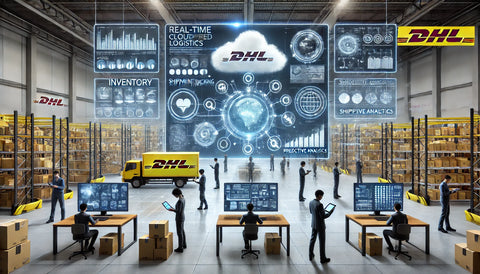
Adapting to Global Supply Chain Disruptions with Agility
The logistics industry faces continuous challenges, from natural disasters to geopolitical tensions, that can disrupt global supply chains. DHL’s ability to adapt quickly to such disruptions is a key differentiator. With contingency plans, flexible infrastructure, and a responsive global network, DHL can pivot operations in response to unexpected events. For example, DHL’s diversified network of distribution centers allows it to reroute shipments and minimize disruption in cases of port closures or regional crises.
DHL’s agility is supported by its investment in advanced technology, such as AI and real-time analytics, which enable swift decision-making. By continuously monitoring global conditions and preparing alternative routes, DHL mitigates the impact of disruptions on its clients. This proactive approach ensures that DHL can maintain reliable service, even in an unpredictable global landscape.
The Significance of Data Security in DHL’s Operations
In today’s digital age, data security is as crucial as physical security in logistics. DHL processes enormous amounts of data across its distribution centers—everything from shipment tracking information to client details. Protecting this data against breaches is essential, especially as logistics increasingly relies on interconnected digital systems. DHL employs robust cybersecurity measures, including encryption, secure access controls, and regular audits, to ensure that data remains protected from cyber threats.
DHL’s commitment to data security extends to compliance with international standards, including the General Data Protection Regulation (GDPR) in Europe and various other global privacy laws. This adherence ensures that client information is safeguarded at every touchpoint, fostering trust and ensuring data integrity throughout the logistics process. Cybersecurity teams within DHL’s distribution centers actively monitor systems, detect threats, and mitigate risks, creating a secure data environment that aligns with the expectations of modern global business.
Customer-Focused Innovations in Distribution Center Design
To keep pace with changing customer needs, DHL continuously enhances the design and functionality of its distribution centers. The layout of these centers is optimized to allow for rapid processing, easy accessibility, and adaptability for various product types. For example, DHL’s centers for high-tech products may feature anti-static flooring and specialized climate control systems, while those handling perishable goods are equipped with temperature-regulated zones.
Additionally, DHL designs its facilities with customer-specific needs in mind, often incorporating custom storage areas, handling equipment, and dedicated processing zones. This customer-centric approach enables DHL to tailor its services to industries with unique requirements, such as luxury goods, pharmaceuticals, and automotive parts. Through intelligent design, DHL creates environments within its distribution centers that facilitate quick, secure, and accurate processing, ensuring that clients’ logistics needs are met efficiently.
Implementing Lean Principles in DHL’s Operations
Lean management principles play an integral role in optimizing DHL’s distribution center operations. By focusing on minimizing waste, improving processes, and enhancing efficiency, lean management ensures that DHL can meet high service standards with reduced resource consumption. DHL’s distribution centers are structured around these principles, emphasizing streamlined workflows, reduced waiting times, and increased productivity.
One key aspect of lean management in logistics is continuous improvement, where DHL teams regularly assess and refine processes to eliminate inefficiencies. This might involve reorganizing the flow of goods within a center, updating equipment, or retraining staff on optimized procedures. Lean principles enable DHL to maintain competitive pricing while delivering consistent, high-quality service to its clients.
The Impact of the Internet of Things (IoT) in DHL’s Distribution Centers
The Internet of Things (IoT) has become a transformative force in logistics, enabling DHL to monitor assets, track shipments, and manage inventory with unprecedented precision. IoT sensors placed on packages, vehicles, and equipment within DHL’s distribution centers provide real-time data on location, condition, and handling status. For example, temperature-sensitive goods can be tracked closely to ensure they remain within safe temperature ranges, which is essential for industries like pharmaceuticals and food.
IoT technology also improves equipment management by alerting DHL teams when machinery requires maintenance. This proactive approach prevents equipment failures that could disrupt operations, ensuring that distribution centers run smoothly. IoT also contributes to operational transparency, allowing clients to monitor shipments in real-time and access detailed insights into the logistics process. The adoption of IoT in DHL’s centers not only enhances reliability but also aligns with the broader trend of digital transformation in logistics.
Realizing Operational Agility with Flexibility and Scalability
One of DHL’s key strengths lies in its ability to scale operations and adapt quickly to changing market conditions. Flexibility and scalability are essential traits in a logistics provider, especially as supply chains become more complex and customer demands evolve rapidly. DHL’s distribution centers are designed to be flexible, with adaptable layouts, modular storage systems, and scalable technology that allow DHL to adjust capacity and resource allocation as needed.
For example, during high-demand periods such as holiday seasons, DHL can scale up its operations without major restructuring. Automated systems, temporary staffing solutions, and flexible workflows enable DHL to handle increased shipment volumes efficiently. This operational agility allows DHL to remain resilient and responsive, ensuring that it meets customer expectations even during peak periods.
Environmental Sustainability Through Carbon Neutral Programs
DHL’s commitment to environmental sustainability extends beyond energy-efficient distribution centers; it also includes carbon-neutral initiatives aimed at offsetting emissions across its operations. One of DHL’s most notable programs, “GoGreen,” focuses on reducing emissions by investing in renewable energy projects, reforestation, and energy-efficient transportation solutions. Clients can opt for carbon-neutral shipping, where DHL offsets the emissions generated by shipments through environmental projects.
Additionally, DHL’s use of hybrid and electric vehicles in last-mile delivery operations contributes to lower carbon emissions, especially in urban areas. The company has set ambitious goals to reduce all logistics-related emissions to net zero by 2050, making it a leader in sustainability within the logistics industry. Through these environmental initiatives, DHL aligns its operations with global sustainability goals, addressing climate concerns while delivering value to environmentally conscious clients.
The Role of DHL Distribution Centers in Crisis Response
DHL’s global presence and expertise in logistics uniquely position it to respond swiftly to crises, such as natural disasters, medical emergencies, and humanitarian aid situations. Through its Disaster Response Team (DRT) program, DHL collaborates with international organizations to support relief efforts. When disasters strike, DHL deploys logistics professionals and resources to set up temporary logistics hubs, ensuring the rapid distribution of essential supplies to affected areas.
These temporary distribution hubs handle goods such as food, water, medical supplies, and shelter materials, supporting communities in need. DHL’s ability to quickly mobilize resources and leverage its network exemplifies the critical role logistics can play in crisis response. By providing logistical support during crises, DHL demonstrates its commitment to corporate social responsibility, contributing to global aid efforts and reinforcing its position as a trusted partner.
Investing in Infrastructure to Support Growing E-Commerce Demands
The rapid growth of e-commerce has reshaped the logistics industry, with an increased emphasis on fast, reliable delivery. DHL’s distribution centers are evolving to accommodate the unique demands of e-commerce, with enhanced capacity for high-speed sorting, picking, and packing of individual orders. Automated systems allow DHL to process orders faster, meeting the expectations of consumers who expect quick delivery times.
DHL has also implemented advanced inventory management techniques that ensure stock availability and quick replenishment, critical for e-commerce fulfillment. To support the scalability required by e-commerce, DHL’s distribution centers feature modular storage and dynamic sorting systems, allowing DHL to quickly adapt to shifts in demand. This e-commerce-focused infrastructure enables DHL to partner effectively with online retailers, ensuring efficient delivery and a seamless experience for end customers.
Building Resilience Against Supply Chain Disruptions
The COVID-19 pandemic highlighted the importance of resilience in global supply chains, and DHL has since focused on reinforcing its operations to withstand disruptions. DHL’s distribution centers are designed to adapt to unforeseen challenges, such as sudden changes in demand, supply shortages, and transportation disruptions. By diversifying supply routes and maintaining buffer stocks in critical locations, DHL ensures continuity in its logistics services.
DHL also leverages technology to identify potential risks and prepare contingency plans. For instance, predictive analytics help DHL anticipate disruptions by analyzing trends in global trade, weather patterns, and geopolitical events. This proactive approach to risk management allows DHL to respond swiftly, minimizing the impact of disruptions on its clients. Through resilience-building measures, DHL demonstrates its commitment to stability and reliability in an unpredictable global landscape.
Continuous Improvement Culture in DHL’s Distribution Centers
Continuous improvement is a core element of DHL’s operational philosophy, encouraging teams to innovate and refine processes regularly. This culture of improvement allows DHL to adapt quickly to new challenges, implement best practices, and stay competitive. Through initiatives like the “First Choice” program, DHL empowers employees to contribute ideas for enhancing service quality, efficiency, and safety.
DHL also conducts regular performance reviews and audits within its distribution centers, identifying areas for improvement and implementing corrective actions. By fostering a continuous improvement mindset, DHL not only enhances productivity but also nurtures an environment where employees are engaged in achieving organizational goals. This commitment to ongoing improvement ensures that DHL remains agile and effective in a rapidly evolving logistics industry.
Meeting Regulatory Compliance in Diverse Markets
Operating a global logistics network requires strict adherence to a wide range of regulatory requirements. DHL’s distribution centers comply with local, national, and international regulations concerning transportation, customs, safety, and environmental standards. Compliance teams within DHL are dedicated to understanding these regulations, ensuring that operations meet all legal requirements and avoid costly delays or penalties.
In regulated industries, such as pharmaceuticals and electronics, compliance becomes even more critical. DHL’s teams work closely with clients in these sectors, offering specialized services that meet stringent regulatory standards. By maintaining high compliance standards, DHL upholds its reputation as a reliable logistics partner, capable of navigating the complexities of global trade while protecting its clients’ interests.
Future Trends and Innovations Shaping DHL’s Distribution Centers
As logistics continues to evolve, DHL’s distribution centers are poised to integrate new technologies and innovations that will shape the future of global logistics. Some key trends on the horizon include:
- Drone Deliveries: DHL is testing drone technology for last-mile delivery in remote areas, which can reduce delivery times and lower environmental impact.
- 5G Connectivity: The rollout of 5G networks will enable faster, more reliable communication between devices, enhancing IoT applications and real-time tracking in distribution centers.
- Augmented Reality (AR): AR is being explored for training and maintenance purposes, helping staff visualize complex procedures and identify equipment issues quickly.
- Sustainable Building Practices: As part of its green initiative, DHL plans to implement more eco-friendly construction materials and designs, reducing the environmental footprint of new distribution centers.
By staying at the forefront of these trends, DHL positions itself to meet future logistics demands effectively. The company’s proactive approach to innovation ensures that its distribution centers remain adaptable, efficient, and aligned with the expectations of modern commerce.

Conclusion
DHL’s distribution centers are more than just warehouses; they are the pulse of a global logistics network that thrives on efficiency, technology, and strategic placement. By leveraging automation, advanced inventory systems, and sustainability initiatives, DHL sets the benchmark for modern logistics. The company’s ability to meet the needs of businesses and consumers alike through tailored services and innovative practices ensures its continued dominance in the field of global supply chain management. Through these efforts, DHL not only contributes to seamless commerce but also fosters a logistics landscape ready for the future.
Read More
- Understanding Distribution Centers: Core Functions and Benefits
- The Role of Regional Distribution Centers in Modern Supply Chains
- A Closer Look at Academy Distribution Centers: Key Features and Operations
- The Advantages of Using 3PL Distribution Centers for Businesses
- How Distribution Centers Enhance Efficiency in Warehousing and Logistics
- Choosing the Right Distribution Center for Your Business Needs


